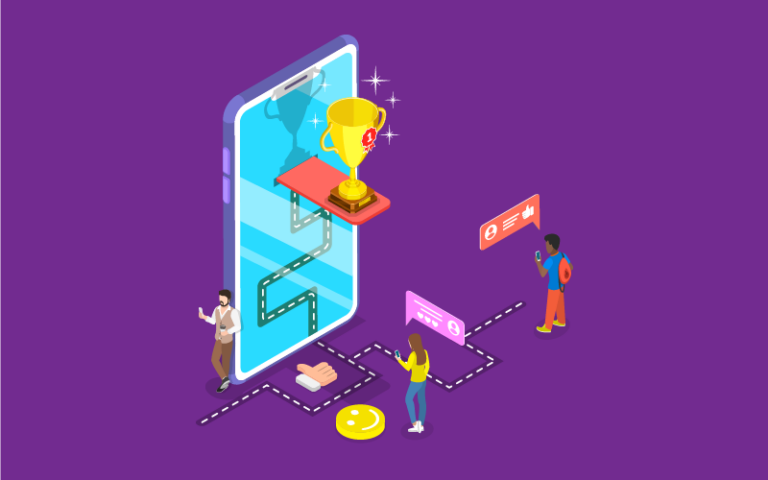Gamification in eLearning: Enhancing Engagement and Motivation

The rise of eLearning has transformed the way people acquire new skills, whether for personal development or professional growth. As technology evolves, so do the methods of engaging learners. One of the most powerful tools in this domain is gamification—using game-like elements in non-gaming contexts to boost engagement, motivation, and retention. In the context of eLearning, gamification has gained significant traction as a way to make the learning process more interactive, fun, and effective.
In this blog, we will explore what gamification in eLearning is, why it matters, and how it can improve learner outcomes by enhancing both engagement and motivation.
What is Gamification in eLearning?
At its core, gamification is the application of game design elements, such as points, leaderboards, badges, and challenges, to non-game environments. In eLearning, this can involve integrating these elements into online courses, quizzes, or learning management systems to create a more interactive experience. It draws on the principles of game theory to encourage learners to participate actively and to motivate them to reach their educational goals.
Examples of gamification in eLearning include:
- Points systems: Learners earn points for completing lessons, quizzes, or activities.
- Badges and certifications: Completing modules or achieving milestones results in digital badges or certificates.
- Leaderboards: Learners can see how they rank compared to others, building healthy competition.
- Progress tracking: Visual indicators, such as progress bars, show how far learners have come, keeping them motivated to complete their courses.
- Challenges and quests: Structured tasks that engage learners and lead them toward their learning objectives.
Why Gamification Works
Gamification in eLearning works because it taps into human psychology. People are naturally motivated by rewards, competition, and the desire to achieve goals. By applying these concepts to learning, gamification makes the educational process feel more like an enjoyable challenge rather than a tedious task. Here’s why it is so effective:
- Increased Engagement
Traditional eLearning can sometimes feel monotonous, particularly when learners are required to go through long, text-heavy courses or read material without much interaction. Gamification introduces a sense of play and interactivity, transforming static learning experiences into dynamic ones. Points, badges, and leaderboards encourage learners to stay engaged, compete with others, and challenge themselves. - Boosted Motivation
The competitive elements of gamification, such as leaderboards or timed challenges, trigger learners’ intrinsic motivation to succeed. The desire to achieve higher scores, collect badges, or complete challenges drives learners to stay focused and work harder to meet their goals. In turn, this motivation leads to better learning outcomes. - Real-Time Feedback
One of the most significant advantages of gamified eLearning platforms is the ability to provide immediate feedback. When learners know how they are performing in real-time, it helps them adjust their approach and improve their understanding. Whether they score high on a quiz or miss a question, learners get instant feedback that aids in retaining the knowledge and improving performance. - Encouragement through Positive Reinforcement
Positive reinforcement is a key feature of gamification. The rewards learners receive for their achievements—whether points, badges, or certificates—act as affirmations of their success. This continuous recognition helps learners build confidence and feel a sense of accomplishment, further motivating them to continue learning. - Enhanced Retention and Learning
Gamification improves retention by making learning experiences more memorable. The sense of achievement associated with completing a level or earning a badge helps to cement the knowledge in a learner’s memory. By connecting learning activities with emotions like joy, excitement, or pride, gamification ensures that the information is more likely to be retained in the long term. - Sense of Progress
Gamification often includes visual cues that show learners how far they’ve come in a course—whether through progress bars, checklists, or achievement milestones. This sense of progress is important because it provides learners with a clear understanding of their growth, creating a sense of accomplishment and motivating them to continue learning until they reach their goals.
Key Gamification Techniques in eLearning
To harness the full power of gamification in eLearning, there are several key techniques that can be employed to engage and motivate learners:
- Badging and Certification
Awarding learners badges or certifications for completing certain tasks or achieving specific milestones is a popular technique. These visual rewards provide tangible recognition for learners’ efforts and act as motivators for continued success. - Leaderboards and Competition
Creating leaderboards where learners can see how they rank among their peers creates a sense of healthy competition. This competition drives learners to perform better, especially when rewards or public recognition are involved. - Storytelling and Challenges
Gamified eLearning can include story-driven challenges or quests. Learners are more likely to remain engaged when they feel like they are on a journey or mission, particularly when completing each stage of the journey earns them rewards. - Social Sharing and Collaboration
Allowing learners to share their achievements or progress on social platforms can boost engagement. Social learning components, such as group challenges or peer feedback, also increase motivation by creating a sense of community. - Levels and Progression
Similar to video games, learners can progress through levels or stages, with each stage becoming more challenging. This gives learners a clear path to success and provides incremental rewards for continued effort.
Benefits of Gamification in eLearning
Implementing gamification in eLearning brings numerous benefits:
- Increased learner engagement: Learners are more likely to stay focused and interested in courses that incorporate game-like elements.
- Higher completion rates: The sense of achievement and progress encourages learners to complete courses.
- Improved learning outcomes: Interactive and fun learning experiences make it easier for learners to retain information.
- Motivation to self-learn: Learners are motivated to challenge themselves and seek out learning opportunities outside of structured courses.
The Future of Gamification in eLearning
As technology continues to advance, gamification in eLearning is expected to evolve. Artificial intelligence (AI) and machine learning can make gamified learning experiences even more personalised, tailoring challenges, feedback, and rewards to individual learner needs. Additionally, virtual and augmented reality (VR and AR) are likely to play an increasing role, offering immersive, game-like environments for learners to explore and interact with.
SeamsCloud: Your Partner in Gamified eLearning
At SeamsCloud, we understand the importance of engagement in the learning process. Our eLearning solutions are designed with gamification in mind, making learning experiences more interactive, enjoyable, and effective. Whether you want to incorporate points, badges, leaderboards, or real-time feedback into your training, SeamsCloud has the tools and expertise to make it happen.
Ready to bring gamified eLearning to your organisation? Contact SeamsCloud today to learn more about how we can transform your learning programmes and enhance learner motivation. Let’s make learning fun, engaging, and impactful together!

